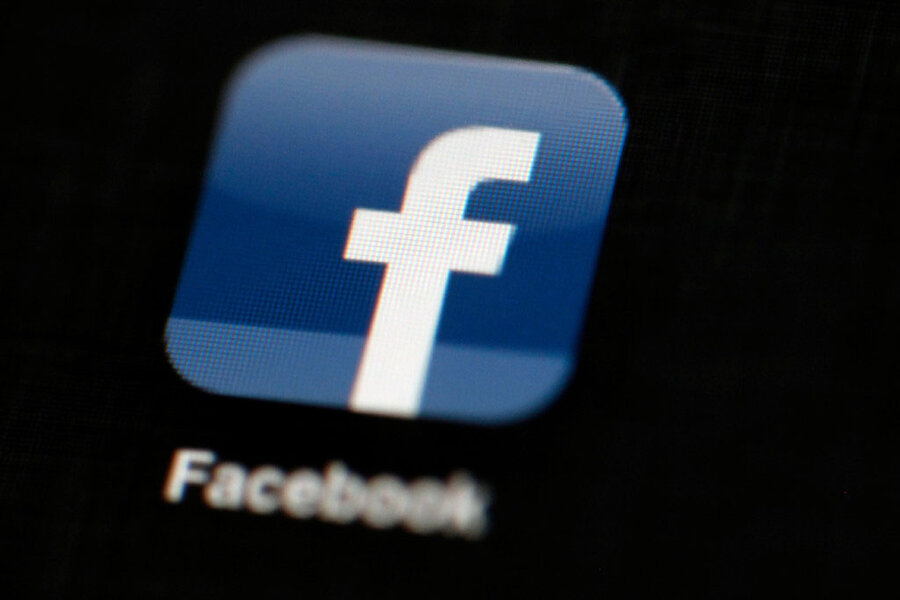Research shows how to 'innoculate' readers from fake news
Loading...
The old saying “forewarned is forearmed” applies to the fight against fake news.
Putting a short, contextualizing message before spurious news stories can keep readers from accepting their claims, according to a paper published Monday in the journal Global Challenges.
The paper’s authors – Anthony Leiserowitz and Seth Rosenthal at Yale University; Sander van der Linden at Churchill College, Cambridge, England; and Edward Maibach at George Mason University – wanted to investigate public understanding of the scientific consensus that humans are causing climate change.
To this end, they divided a national sample of the American public into six different groups. Several of them read the Oregon Petition, which claims to have received the signatures of more than 31,000 climate-skeptic scientists – and which Professor Leiserowitz calls a “classic piece of disinformation.” Some of its signatories include the long-deceased Charles Darwin and members of the Spice Girls.
With the help of social media, sketchy information like this often gets taken as fact, circulates freely, and causes widespread damage before it’s debunked. The researchers say they’ve found a solution, but it’s up to newsreaders and the media to adopt it.
“You can inoculate against the effects of fake news,” Leiserowitz, director of the Yale Program on Climate Change Communication, tells The Christian Science Monitor in a phone interview. He and his colleagues gave one group just the petition. Another group instead viewed a pie chart showing that, in reality, 97 percent of climate scientists agree that humans are driving climate change. A third group saw the pie chart, then read the bogus petition.
Two other groups read the petition after reading what Leiserowitz calls “inoculations:” warnings that politically motivated groups try to use misleading tactics to raise doubts among the public about the scientific consensus, along with specific warnings about the Oregon Petition, followed by the pie chart. ”If you can give people a little pre-awareness that what they are likely to hear is bogus, you can inoculate against disinformation,” he says.
The pie charts served that role. Leiserowitz explains that “when we give both messages” – the petition and the pie chart – “side-by-side, they basically cancel each other out,” and that perceptions of the “scientific consensus” did not change. But when readers read inoculation messages before the fake Oregon petition, their own estimate of the degree of scientific consensus still increased. The effect, the researchers noted, was similar “across political party affiliation.”
This means that such “inoculations” can help preserve the truth – and not just with scientific stories. Professor Leiserowitz suggested that similar warnings could also have helped rebut false claims the number of attendees at President Trump’s inauguration before they gained traction.
But these messages will only work if news organizations use them. Some news websites have doubled down on their commitment to fact-checking: The Washington Post, for instance, recently introduced a Twitter plug-in that checks the veracity of Mr. Trump’s tweets in real time.
But readers of other publications may be less receptive to these messages. Leiserowitz acknowledged that many news sites “basically say, ‘Do not trust any information that comes from outside news sources....' That increasingly walls us off from one another.”
Jack Zhou, an instructor in environmental politics at Duke University in Durham, N.C., says some occupants of so-called “news bubbles” may prefer to accept fake news as truth. “The state of fragmented media may dull the potential practical impact of inoculation messages, particularly in terms of the audiences serviced by those media,” Mr. Zhou, who has researched the identity politics of climate change, tells the Monitor in an email.
After all, sites with fake news are only catering to their audiences. Paul Levinson, a communications professor at Fordham University in New York, told the Monitor in December that, “These bubbles have not been imposed upon the public – it was what the people want. As long as social media continues to provide a very easy forum for these news bubbles ... it is not going to stop.” [Editor's note: An earlier version of this story misspelled Mr. Levinson's first name.]
Social-media giant Facebook recognizes this as a problem. After chief executive officer Mark Zuckerberg initially denied that Facebook’s carrying fake news was harming public discourse, the company announced a campaign to detect and flag unfounded stories.
The campaign was announced in mid-December, before the inoculation paper was published. But it also fights fake news by putting it in context. Facebook has partnered with online fact-checking services to spot dubious links. TechCrunch reports that, when they find one, Facebook will "show posts of those links lower in the News Feed. It will also attach a warning label noting 'Disputed by [one or more of the fact checkers]' with a link to the debunking post on News Feed stories and in the status composer if users are about to share a dubious link."
The same article reported that 44 percent of US adults get news from Facebook. The study of inoculation messages released Monday suggests that its plan to flag and debunk fake news could keep those users from accepting it – if they click at all after seeing a warning label.
That, in turn, could benefit civic discourse. Without a broadly accepted set of facts, Professor Leiserowitz explains, “it gets harder and harder to have rational conversations.”






